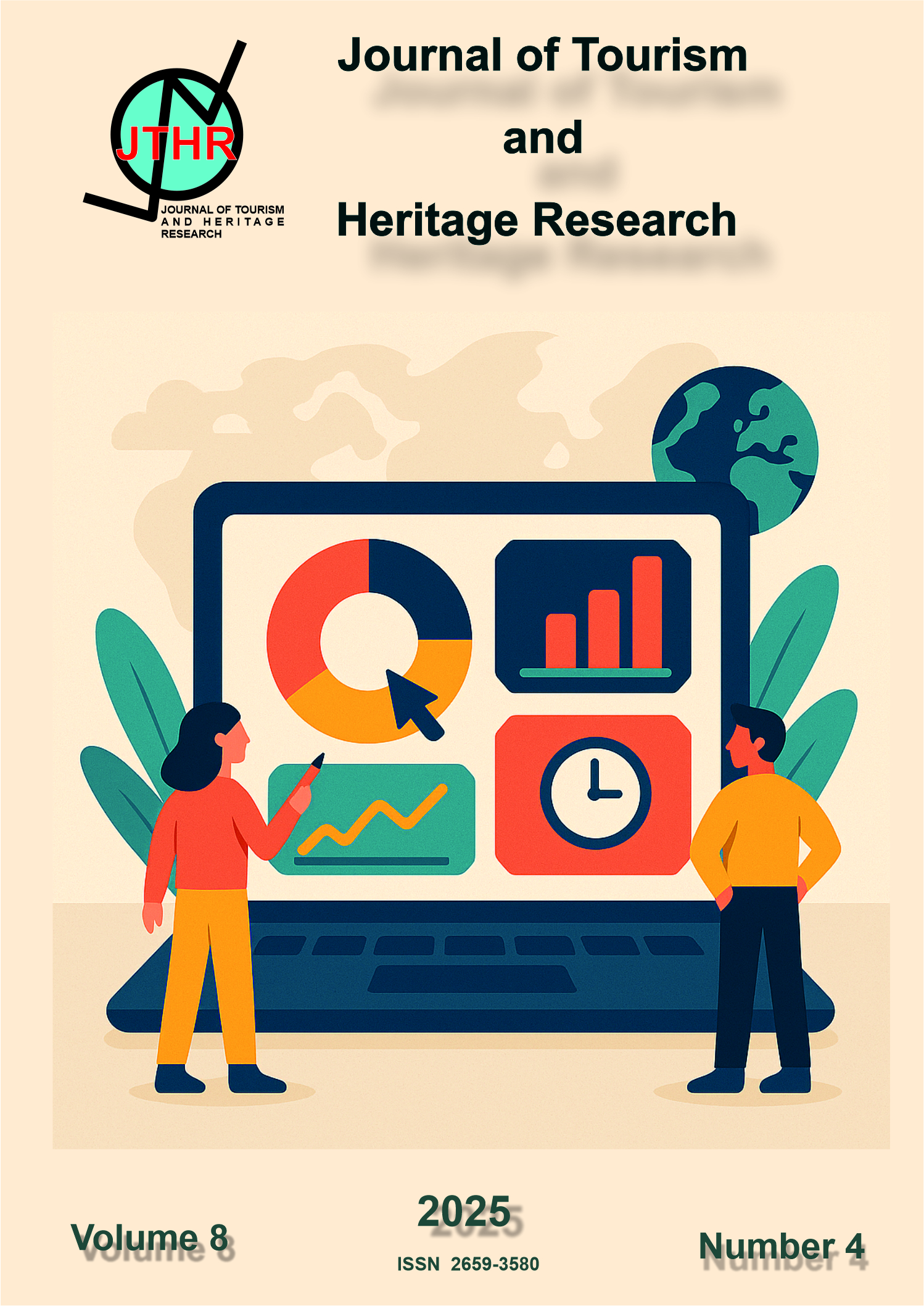Artificial Intelligence In Tourism Marketing: Predicting Trends and Personalizing Customer Experience
Abstract
Tourism marketing has undergone a significant transformation thanks to artificial intelligence (AI), enabling more efficient personalization and accurate prediction of consumption trends. This study examines how AI tools are revolutionizing marketing strategies in the tourism sector, particularly in terms of customer segmentation, behavior prediction, and optimizing the overall tourist experience. Through a qualitative approach, the research was based on in-depth interviews with marketing managers from five tourism companies that have successfully integrated AI into their operations. The results indicate that AI not only enhances the personalization of services but also allows for more accurate predictions of consumer preferences, increasing customer satisfaction and loyalty (Gouveia & Eusébio, 2019; Chen & Nijkamp, 2018). However, challenges remain, such as the lack of quality data and organizational resistance to adopting AI-based strategies (Dwyer & Forsyth, 1996). Additionally, the study emphasizes the crucial role of academic institutions in integrating AI into their tourism marketing curricula to better prepare future professionals for the changing needs of industry. The conclusions suggest that greater collaboration between academia and industry is necessary to ensure the effective use of AI tools in the marketing sector (Henriques, 2024). The study also calls for further research on the role of AI in marketing innovation and enhancing customer experience within tourism, as well as exploring the practical implications of AI adoption in smaller tourism enterprises (Gouveia & Eusébio, 2019).
References
Chen, J. M., Petrick, J. F., Papathanassis, A., & Li, X. (2019). A meta-analysis of the direct economic impacts of cruise tourism on port communities. Tourism Management Perspectives, 31, 209–218. https://doi.org/10.1016/j.tmp.2019.05.005
Cusano, M. I., Ferrari, C., & Tei, A. (2017). Port hierarchy and concentration: Insights from the Mediterranean cruise market. International Journal of Tourism Research, 113, 101–113. https://doi.org/10.1002/jtr
Dwyer, L., & Forsyth, P. (1996). Economic Impacts of Cruise Tourism in Australia. Journal of Tourism Studies, 7(2), 36–43. Retrieved from http://www.jcu.com.au/business/public/groups/everyone/documents/journal_article/jcudev_012623.pdf
Gouveia, A. X. S., & Eusébio, C. (2019). Assessing the direct economic value of cruise tourism in a port of call: The case of Funchal on the island of Madeira. Tourism and Hospitality Research, 19(4), 422–438. https://doi.org/10.1177/1467358418768666
Henriques, R. (2024). The role of academic institutions in integrating AI in tourism marketing education. Tourism Marketing Journal, 34(2), 118-130.
Klein, R. A. (2012). Responsible cruise tourism: Issues of cruise tourism and sustainability. Journal of Hospitality and Tourism Management, 18(01), 107–116. https://doi.org/10.1375/jhtm.18.1.107
Loscertales-Sánchez, P., & Peláez-Verdet, A. (2017). The economic influence of cruise tourism onto a littoral destination. International Journal of Scientific Management Tourism, 3(2), 351–367. Retrieved from http://www.ijosmt.com/index.php/ijosmt/article/view/237
Sharples, L. (2019). Research note: Customer experience management in cruise pre-consumption. International Journal of Culture, Tourism, and Hospitality Research, 13(2), 235–243. https://doi.org/10.1108/IJCTHR-02-2019-0023
Zou, S., Migacz, S. J., & Petrick, J. F. (2017). The utilization of critical incident technique to examine Chinese tourists’ cruising motivations and constraints. Tourism Analysis, 22(4), 577–582. https://doi.org/10.3727/108354217X15023805737549

This work is licensed under a Creative Commons Attribution 4.0 International License.
1.The works published in this magazine are subject to the following terms: Tourism Research Association (the publisher) preserves the patrimonial rights (copyright) of the published works, and favors and allows the reuse of them under the license of use indicated in point 2.
© Investur, 2017
2.The works are published in the electronic edition of the magazine under a Creative Commons Attribution-NonCommercial-NoDerivative 3.0 Spain (legal text) license. They can be copied, used, disseminated, transmitted and publicly displayed, provided that: i) the authorship and the original source of their publication (journal, editorial and URL of the work) are cited; ii) are not used for commercial purposes; iii) the existence and specifications of this license are mentioned.
3. Self-file conditions. Authors are allowed and encouraged to disseminate electronically the pre-print versions (version before being evaluated) and / or post-print (version evaluated and accepted for publication) of their works before publication, since it favors their circulation and earlier dissemination and with it a possible increase in its citation and scope among the academic community.


